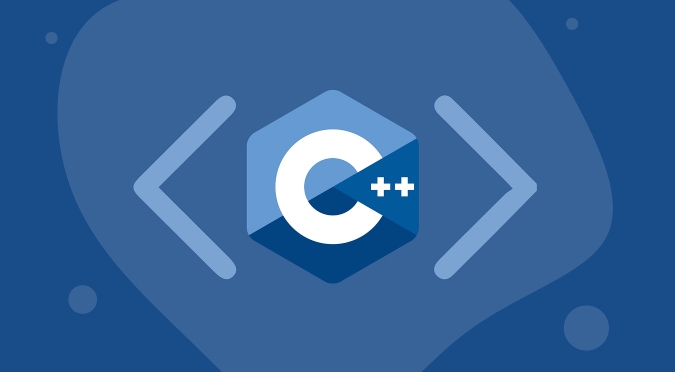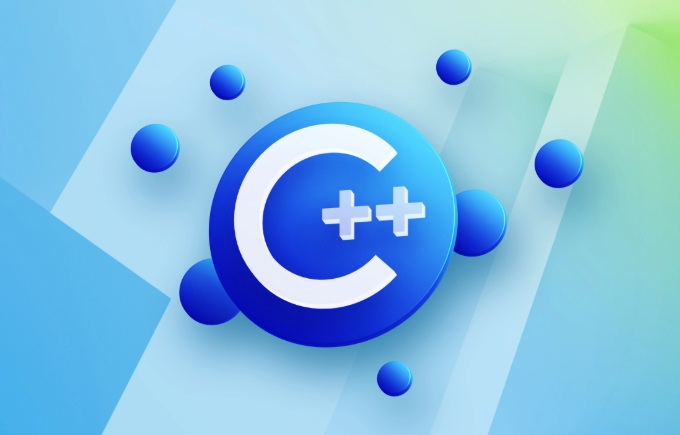How to convert a string to uppercase or lowercase in C ?
Jul 19, 2025 am 01:34 AMIn C , strings can be converted to uppercase or lowercase by processing each character using std::toupper or std::tolower from

In C , converting a string to uppercase or lowercase isn't something you can do directly with a built-in function for the entire string, but it's straightforward once you know how to work with character-by-character conversion using standard library functions.

Use std::toupper and std::tolower from <cctype></cctype>
C provides std::toupper and std::tolower in the <cctype></cctype> header. These functions operate on individual characters, so to convert an entire string, you'll need to loop through each character and apply the transformation.
Here’s a simple example:

#include <iostream>
#include <string>
#include <cctype>
int main() {
std::string input = "Hello World!";
// Convert to uppercase
for (char &c : input) {
c = std::toupper(static_cast<unsigned char>(c));
}
std::cout << input << std::endl;
// Convert back to lowercase
for (char &c : input) {
c = std::tolower(static_cast<unsigned char>(c));
}
std::cout << input << std::endl;
return 0;
}A few things to note:
- Always cast the character to
unsigned charbefore passing it tostd::toupperorstd::tolower. This avoids undefined behavior for negative values. - These functions modify characters in place. If you want to preserve the original string, make a copy first.
Consider using Boost for convenience
If you're working on a project where third-party libraries are allowed, the Boost library offers convenient utilities like boost::algorithm::to_upper_copy and boost::algorithm::to_lower_copy.

Example:
#include <boost/algorithm/string.hpp>
#include <string>
#include <iostream>
int main() {
std::string input = "Hello World!";
std::string upper = boost::algorithm::to_upper_copy(input);
std::string lower = boost::algorithm::to_lower_copy(input);
std::cout << upper << std::endl;
std::cout << lower << std::endl;
return 0;
}This method is cleaner and handles edge cases well, but it adds a dependency on Boost, which may not be ideal for small projects or embedded systems.
Watch out for localization issues
When dealing with non-English characters (like accented letters or characters from other alphabets), be aware that std::toupper and std::tolower behave according to the current locale settings. By default, they only handle ASCII characters correctly.
If your application needs to support Unicode properly:
- Stick to ASCII unless you have a specific need for internationalization.
- Otherwise, consider using libraries like ICU (International Components for Unicode) for robust handling of multilingual text.
Also, keep in mind:
- Some characters don’t have uppercase or lowercase equivalents.
- Case conversions might change the number of characters in some languages (e.g., German ? → SS when uppercased).
So, whether you're just tweaking basic strings or preparing for more complex text processing, knowing how to use std::toupper and std::tolower gives you solid control. For simpler code or larger applications, Boost or ICU can help clean things up. Either way, it's not too hard once you get used to looping through characters.
The above is the detailed content of How to convert a string to uppercase or lowercase in C ?. For more information, please follow other related articles on the PHP Chinese website!

Hot AI Tools

Undress AI Tool
Undress images for free

Undresser.AI Undress
AI-powered app for creating realistic nude photos

AI Clothes Remover
Online AI tool for removing clothes from photos.

Clothoff.io
AI clothes remover

Video Face Swap
Swap faces in any video effortlessly with our completely free AI face swap tool!

Hot Article

Hot Tools

Notepad++7.3.1
Easy-to-use and free code editor

SublimeText3 Chinese version
Chinese version, very easy to use

Zend Studio 13.0.1
Powerful PHP integrated development environment

Dreamweaver CS6
Visual web development tools

SublimeText3 Mac version
God-level code editing software (SublimeText3)

Hot Topics
 What is high-frequency virtual currency trading? The principles and technical implementation points of high-frequency trading
Jul 23, 2025 pm 11:57 PM
What is high-frequency virtual currency trading? The principles and technical implementation points of high-frequency trading
Jul 23, 2025 pm 11:57 PM
High-frequency trading is one of the most technologically-rich and capital-intensive areas in the virtual currency market. It is a competition about speed, algorithms and cutting-edge technology that ordinary market participants are hard to get involved. Understanding how it works will help us to have a deeper understanding of the complexity and specialization of the current digital asset market. For most people, it is more important to recognize and understand this phenomenon than to try it yourself.
 What is a destructor in C ?
Jul 19, 2025 am 03:15 AM
What is a destructor in C ?
Jul 19, 2025 am 03:15 AM
The destructor in C is a special member function that is automatically called when an object is out of scope or is explicitly deleted. Its main purpose is to clean up resources that an object may acquire during its life cycle, such as memory, file handles, or network connections. The destructor is automatically called in the following cases: when a local variable leaves scope, when a delete is called on the pointer, and when an external object containing the object is destructed. When defining the destructor, you need to add ~ before the class name, and there are no parameters and return values. If undefined, the compiler generates a default destructor, but does not handle dynamic memory releases. Notes include: Each class can only have one destructor and does not support overloading; it is recommended to set the destructor of the inherited class to virtual; the destructor of the derived class will be executed first and then automatically called.
 Explain RAII in C
Jul 22, 2025 am 03:27 AM
Explain RAII in C
Jul 22, 2025 am 03:27 AM
RAII is an important technology used in resource management in C. Its core lies in automatically managing resources through the object life cycle. Its core idea is: resources are acquired at construction time and released at destruction, thereby avoiding leakage problems caused by manual release. For example, when there is no RAII, the file operation requires manually calling fclose. If there is an error in the middle or return in advance, you may forget to close the file; and after using RAII, such as the FileHandle class encapsulates the file operation, the destructor will be automatically called after leaving the scope to release the resource. 1.RAII is used in lock management (such as std::lock_guard), 2. Memory management (such as std::unique_ptr), 3. Database and network connection management, etc.
 Using std::optional in C
Jul 21, 2025 am 01:52 AM
Using std::optional in C
Jul 21, 2025 am 01:52 AM
To determine whether std::optional has a value, you can use the has_value() method or directly judge in the if statement; when returning a result that may be empty, it is recommended to use std::optional to avoid null pointers and exceptions; it should not be abused, and Boolean return values or independent bool variables are more suitable in some scenarios; the initialization methods are diverse, but you need to pay attention to using reset() to clear the value, and pay attention to the life cycle and construction behavior.
 C vector get first element
Jul 25, 2025 am 12:35 AM
C vector get first element
Jul 25, 2025 am 12:35 AM
There are four common methods to obtain the first element of std::vector: 1. Use the front() method to ensure that the vector is not empty, has clear semantics and is recommended for daily use; 2. Use the subscript [0], and it also needs to be judged empty, with the performance comparable to front() but slightly weaker semantics; 3. Use *begin(), which is suitable for generic programming and STL algorithms; 4. Use at(0), without manually null judgment, but low performance, and throw exceptions when crossing the boundary, which is suitable for debugging or exception handling; the best practice is to call empty() first to check whether it is empty, and then use the front() method to obtain the first element to avoid undefined behavior.
 How to develop AI-based text summary with PHP Quick Refining Technology
Jul 25, 2025 pm 05:57 PM
How to develop AI-based text summary with PHP Quick Refining Technology
Jul 25, 2025 pm 05:57 PM
The core of PHP's development of AI text summary is to call external AI service APIs (such as OpenAI, HuggingFace) as a coordinator to realize text preprocessing, API requests, response analysis and result display; 2. The limitation is that the computing performance is weak and the AI ecosystem is weak. The response strategy is to leverage APIs, service decoupling and asynchronous processing; 3. Model selection needs to weigh summary quality, cost, delay, concurrency, data privacy, and abstract models such as GPT or BART/T5 are recommended; 4. Performance optimization includes cache, asynchronous queues, batch processing and nearby area selection. Error processing needs to cover current limit retry, network timeout, key security, input verification and logging to ensure the stable and efficient operation of the system.
 C bit manipulation example
Jul 25, 2025 am 02:33 AM
C bit manipulation example
Jul 25, 2025 am 02:33 AM
Bit operation can efficiently implement the underlying operation of integers, 1. Check whether the i-th bit is 1: Use n&(1
 How to check if a String is empty or null in Java?
Jul 21, 2025 am 01:47 AM
How to check if a String is empty or null in Java?
Jul 21, 2025 am 01:47 AM
There are many ways to determine whether a string is empty or null in Java. The most basic one is to use ==null and isEmpty(): 1. First use str==null to avoid null pointer exceptions, and then use str.isEmpty() to judge empty strings; 2. Use ApacheCommons' StringUtils.isEmpty(str) to judge null and empty strings at the same time, and the code is more concise; 3. If you need to deal with whitespace characters, you can use str.trim().isEmpty() or StringUtils.isBlank(). The selection method depends on project dependency and processing requirements for whitespace characters.






